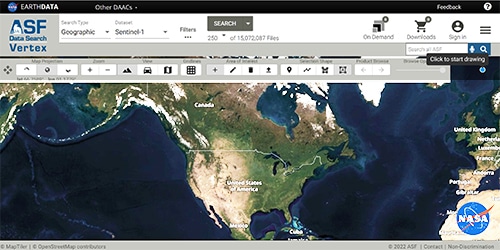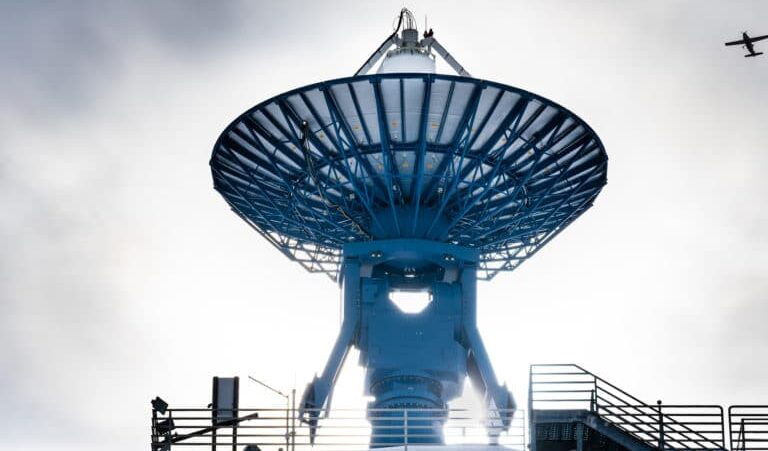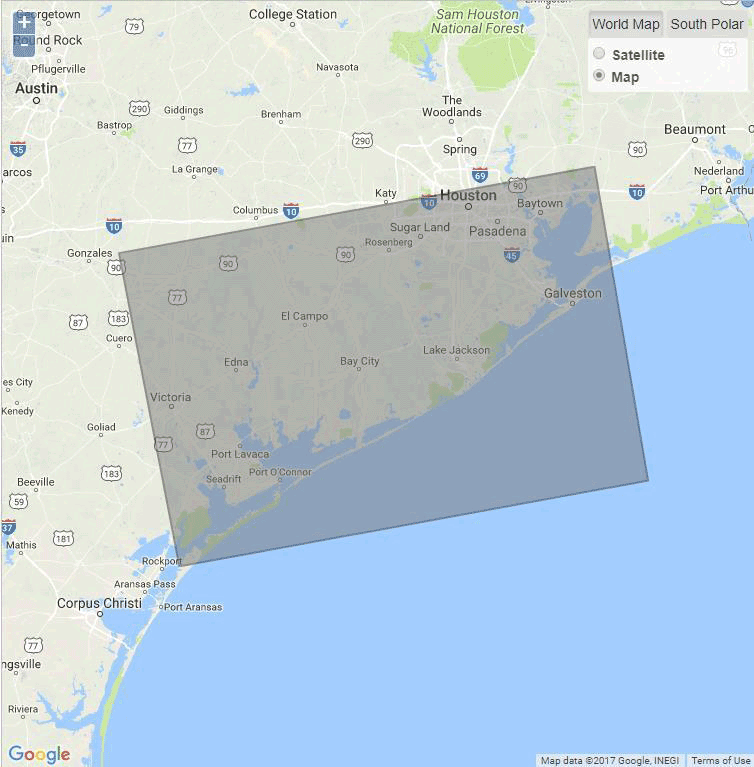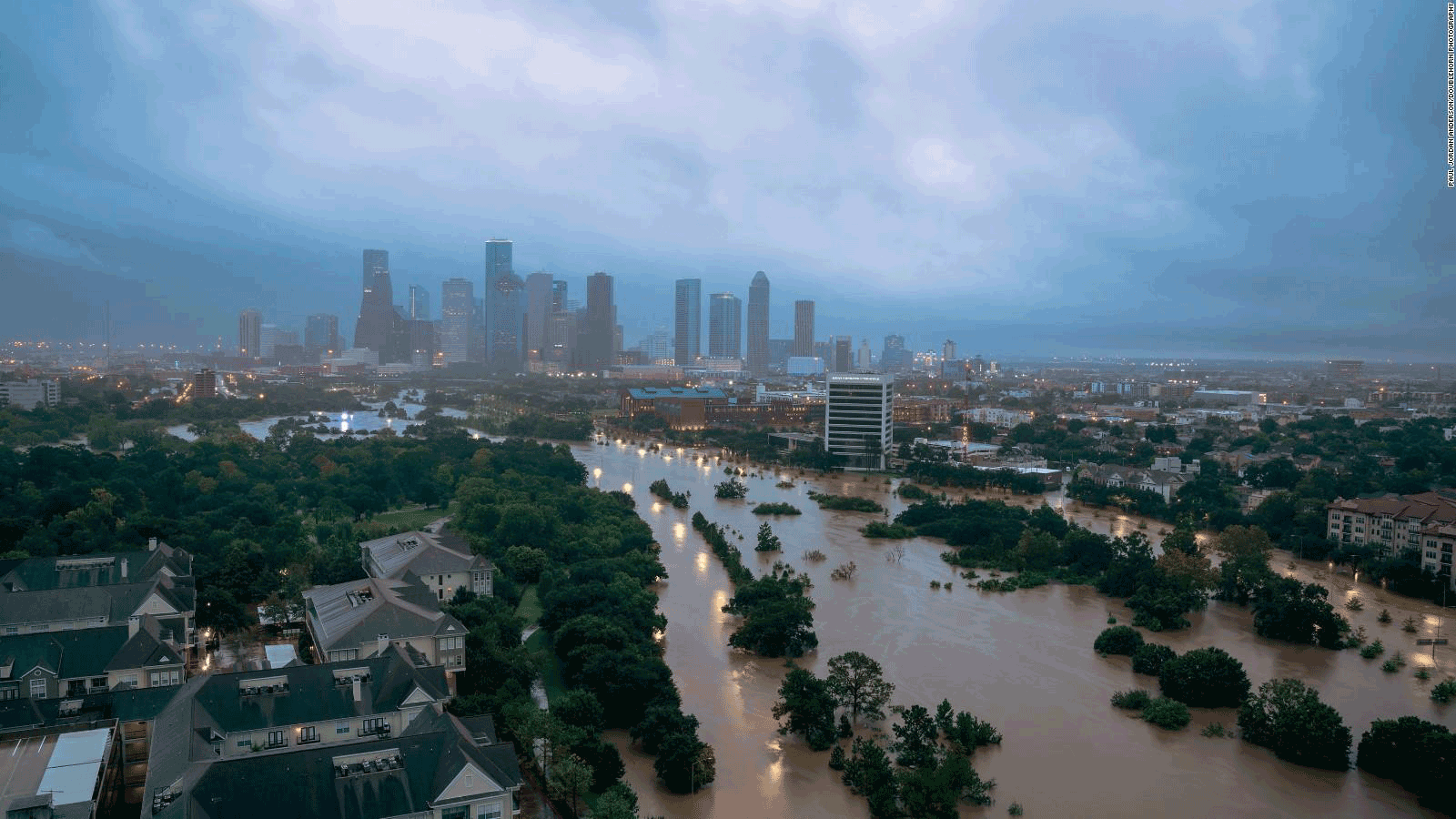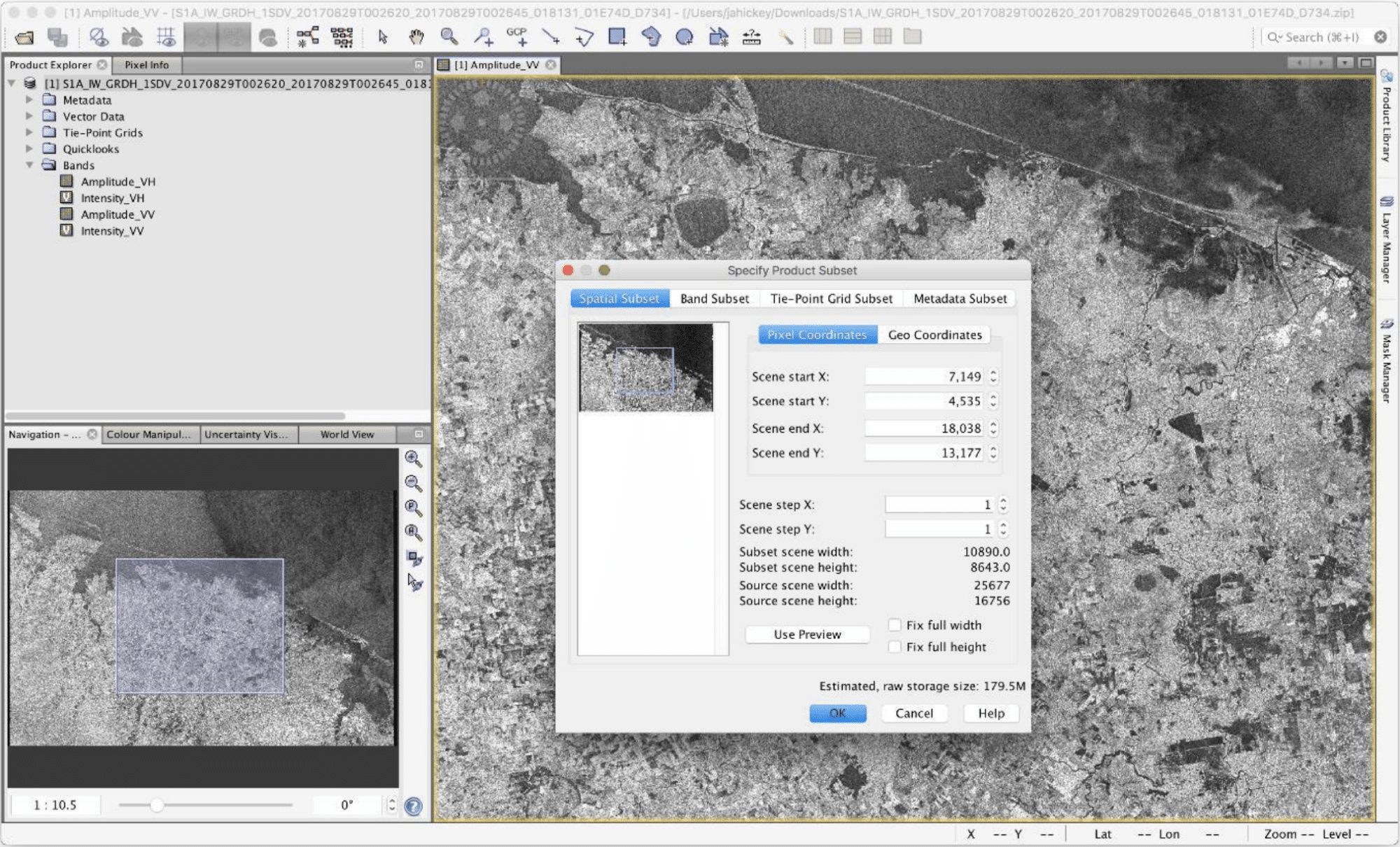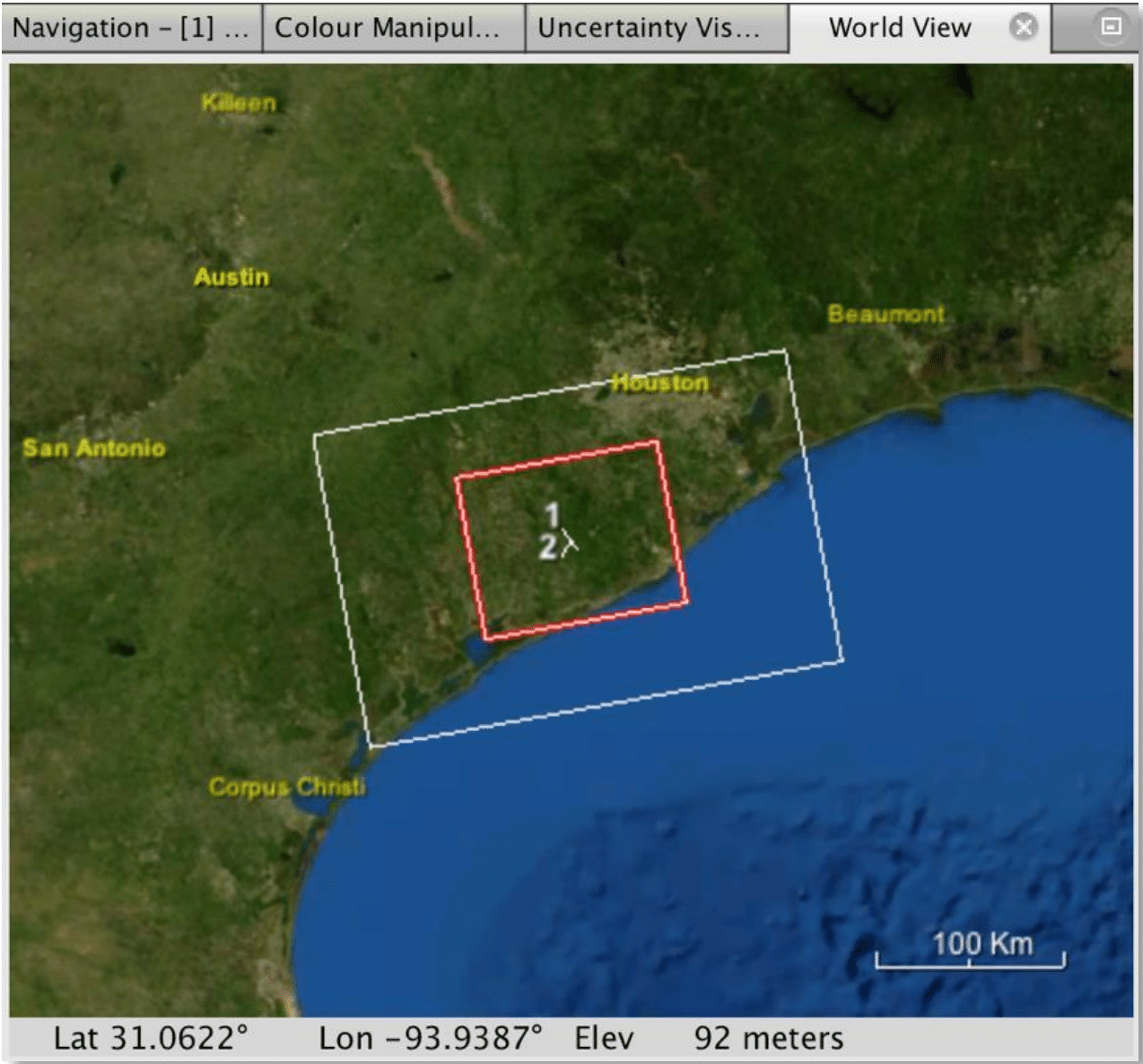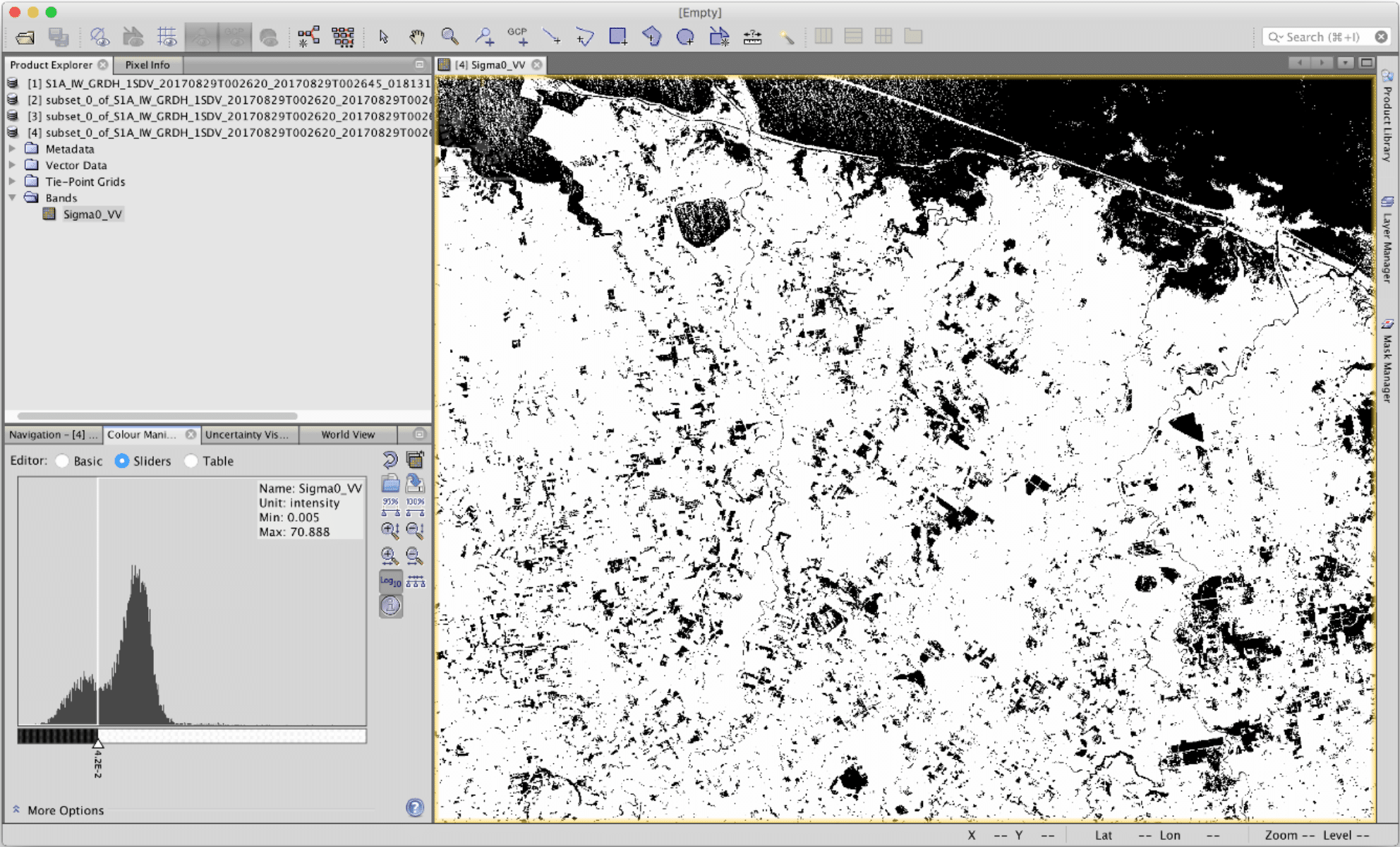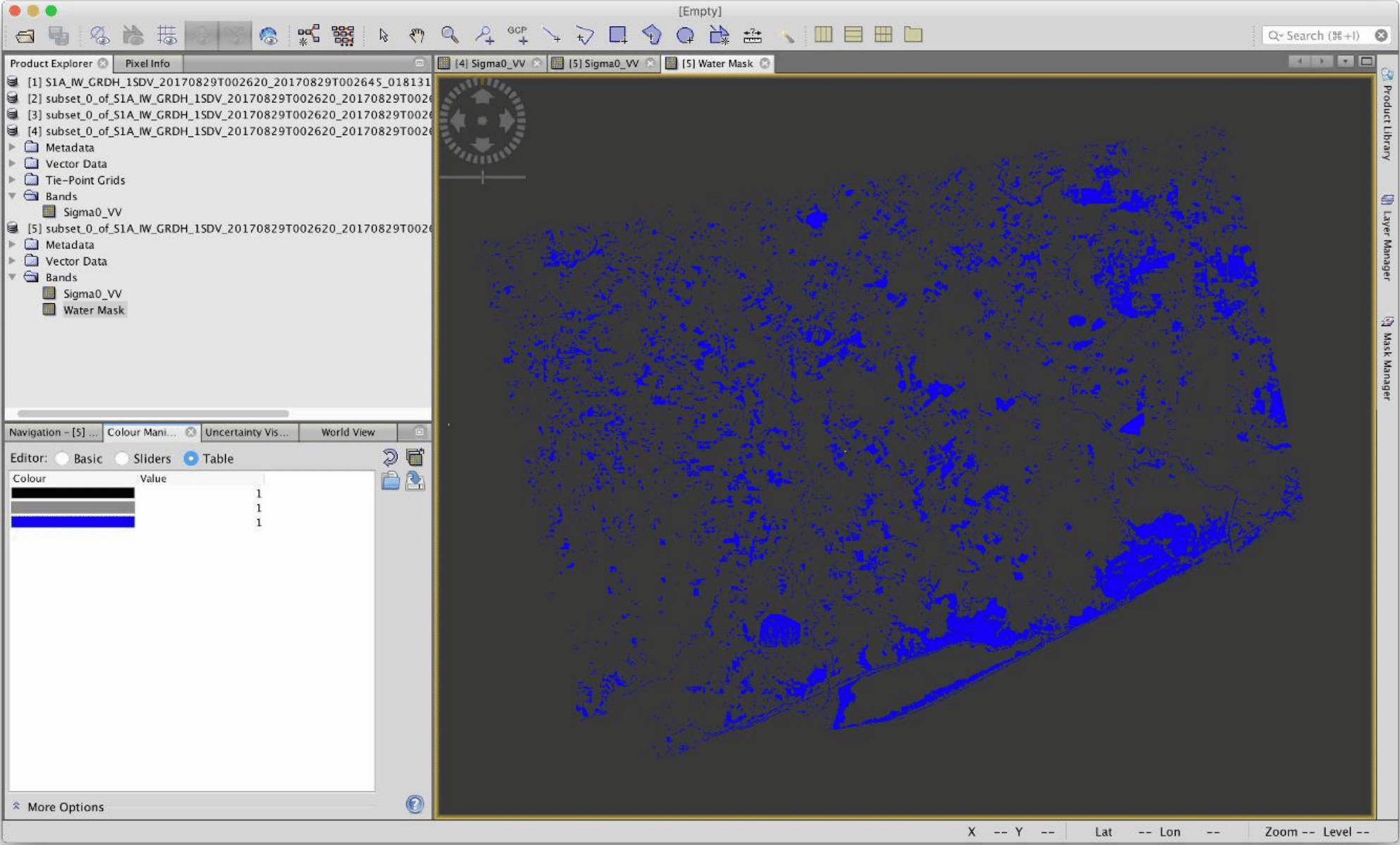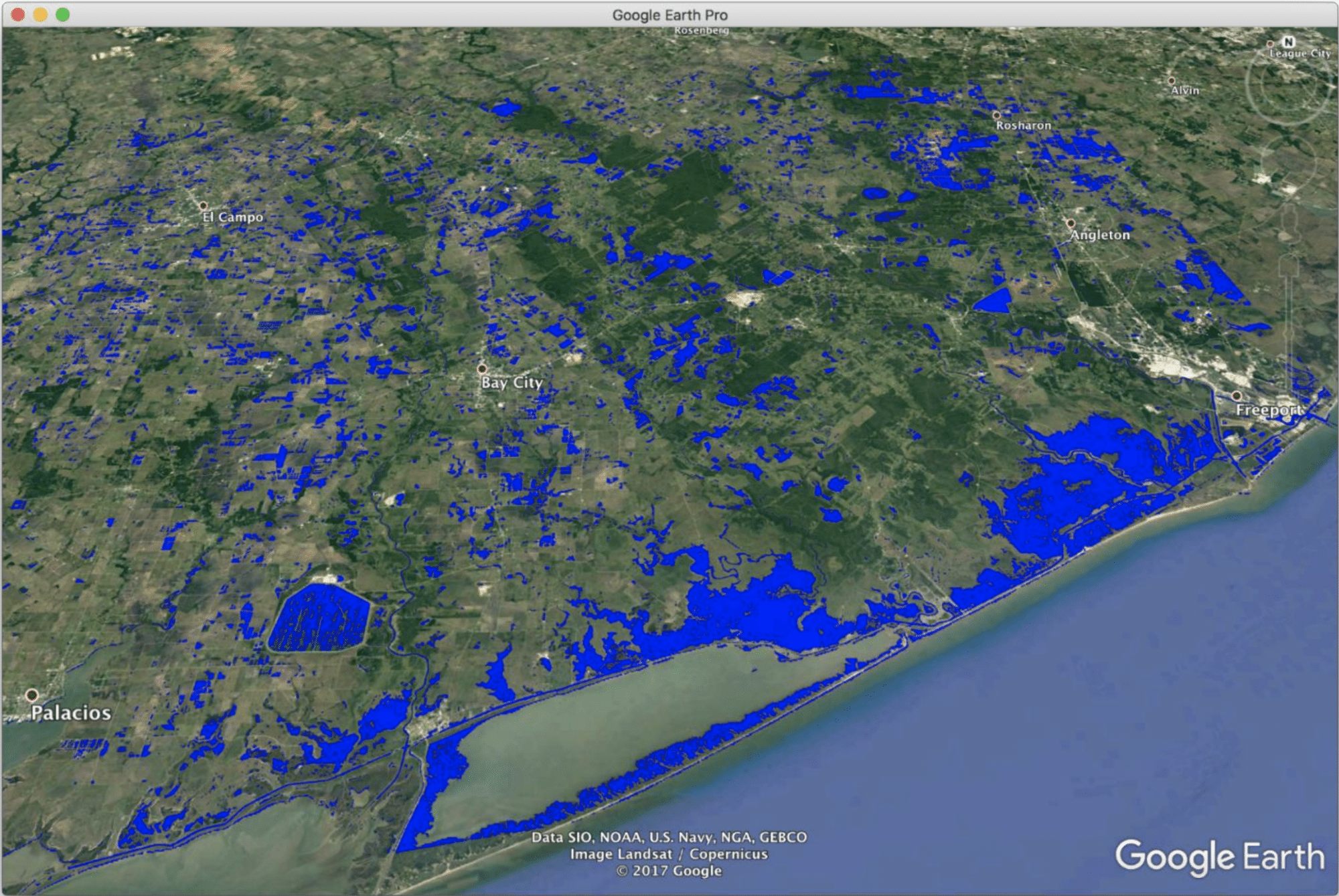Footprint of Sentinel-1 GRD Product.
Adapted from the United Nations Platform for Disaster Management and Emergency Response — UN-SPIDER program
● Easier (Windows): Convert power (dark) to db (light)
Background
The Sentinel-1 system consists of two satellites: Sentinel-1A and Sentinel-1B, each carrying C-band synthetic aperture radar (SAR) sensors. Sentinel-1A was launched on 3, April 2014 and Sentinel-1B on 25, April 2016. They orbit 180° apart, together imaging the entire Earth every six days. In addition, this radar imagery is sensitive to standing water, making it an ideal tool for mapping the extent of floodwater covering an area.
Sentinel-1A passed over Houston, Texas on August 29th, making it possible to create a map that highlights water and flood inundation on the surface. Harvey’s extreme slow movement Aug. 26-30 kept an onslaught of moisture in southeast Texas and Louisiana for days, resulting in catastrophic flooding.
Prerequisites
System Requirements
- At least 16 GB memory (RAM)
Many of the steps take a very long time to process. Consider closing other applications and avoid using the computer while products are processing.
Materials List
- Windows, OS X, Unix
- Sentinel-1 GRD product downloaded from Vertex or use this sample granule:
- Sentinel-1 Toolbox (latest version)
Generating an Inundation Map
Data Preparation
- Download the sample granule from the Prerequisites section or download your own granule using Vertex (Do NOT unzip).
- Open the Sentinel-1 Toolbox.
- In Sentinel-1 Toolbox, use the Open Product button to add your Sentinel-1 GRD product.
- Navigate to the Sentinel-1 GRD product, select the .zip file, and click Open.
- In the Product Explorer window on the left, double-click on the Product to expand its information, which includes Metadata, Tie-points grid, and Bands.
- View a band by expanding the Bands folder. For each polarization recorded, there are two bands: Amplitude and Intensity. (The Intensity band is a virtual one. It is the square of the amplitude). Double-click on either the Amplitude or Intensity to view the image.
- In the bottom left corner, the World View shows the footprint of the selected scene.
- View Product Properties by right-clicking on the Product, which includes information on the mission, acquisition date, pass, etc.
Optional: Create a Subset
- Open the product phase band and zoom-in on your area of interest using the scroll wheel on your mouse.
- Right-click on the image when you are satisfied and select Create Subset from View… in the pop-up menu.
- When the Specify Product Subset dialog appears, double-check your Subset scene and click OK to create subset.
- The created subset is added as a new product, which is also shown in the World View.
Pre-Processing
Calibration
- In Sentinel-1 Toolbox, select the Sentinel-1 GRD product in the Product Explorer. If you created a subset, select the subset instead.
- Navigate to Radar > Radiometric > Calibrate from the Menu panel
- A Calibration window will open. In the I/O Parameters tab, specify the Target Product name and output directory. By default, the Target Product name will be appended with _Cal if you do not create a custom filename.
- In the Processing Parameters tab, select the VV polarization. This will create a new product with calibrated values of the backscatter coefficient.
- Leave all other parameters as default and click Run to calibrate.
Speckle filtering
In this step, we will filter out the speckle noise that exists in SAR imagery due to random interference between returns and the scatterers present on a surface. Speckle noise is a critical pre-processing step for detection/classification optimization. In this example, we will be using a standard “Lee” speckle filter; however, you may experiment with the other speckle filters within Sentinel-1 Toolbox.
- In Sentinel-1 Toolbox, select the calibrated product in the Product Explorer.
- Navigate to Radar > Speckle Filtering > Single Product Speckle Filter from the Menu panel.
- The Single Product Speckle Filter dialog will appear. Specify Target Product name and output directory. By default, the Target Product name will be appended with _Spk if you do not create a custom filename.
- In the Processing Parameters tab, choose “Lee” for the filter
- Change the Filter Size X and Filter Size Y to “7”
- Click Run to begin image filtration
- A new product will be created in the Product Explorer. Open the band in the newly created product to compare the non-filtered and filtered versions.
Determine Threshold
To separate water from non-water, a threshold can be applied. For this, we will analyze the histogram of the filtered backscatter coefficient.
- Select the speckle-filtered product you created in the Preprocessing — Speckle Filtering step.
- Open the Sigma0_VV band in the Product Explorer
- On the left-side panel, select the Color Manipulation tab
- The histogram of the image will show up. Select the logarithmic display button (Log10).
- The histogram will show one or more peaks of different magnitude depending on the data. Low values of the backscatter will correspond to water, and high values will correspond to non-water classes.
- To separate water from the rest of the image, pick a threshold at or near the minimum between the two modes of the distribution, assuming you have a bimodal data distribution (e.g., at 4.2E-2). Drag the sliders within the histogram for reference. Keep a note of this threshold, as you will use it in later steps.
Note: This step assumes that your images have a bimodal distribution of pixel values in the image. If you are using different data, the class values will vary and it may take several iterations to determine the appropriate thresholds. For the process of determining the appropriate thresholds, it is good practice to consider one image representing the maximum flooding and another image representing minimum flooding. Knowledge of the geographical coverage of seasonal flooding helps confirm whether the results are correct.
Geometric Correction
Before creating the water mask, we will terrain-correct the image, which will, in turn, reproject the image into latitude and longitude as well as mask out areas with no elevation.
- Select the speckle-filtered product you created in the Preprocessing — Speckle Filtering step.
- Navigate to Radar > Geometric > Terrain Correction > Range-Doppler Terrain Correction from the Menu bar.
- In the I/O Parameters tab, specify the output name and directory. By default, the name will be appended with _TC if you do not create a custom filename.
- In the Processing Parameters tab, leave the default settings and click Run to begin correction.
- A new product will be created and will appear in the Product Explorer.
Binarization
- Select the terrain-corrected image created in Geometric Correction and open the band.
- Using the determined binary threshold in Determine Threshold, right-click on the band and select Band Maths… from the pop-up menu.
- The Band Maths window will open. Type a name for the new band, for example, “Water Mask.”
- Uncheck the Virtual Band option.
- In the Band Maths Expression box, enter the following formula:
if Sigma0_VV<4.22E-2 then 1 else NaN
- Click OK to create your water mask.
Visualization in Google Earth
- Open the band you created in the Binarization step.
- On the left side panel, select the Color Manipulation tab.
- Within the Color Manipulation tab, select Table.
- Click on the third Color box and change to a color of your choice (e.g., blue).
- In the Product View, right-click on the image and select Export View as Google Earth KMZ.
- In the Export dialog, specify a name and directory to output your KMZ file.
- Once saved, open your new image in Google Earth for visualization.


